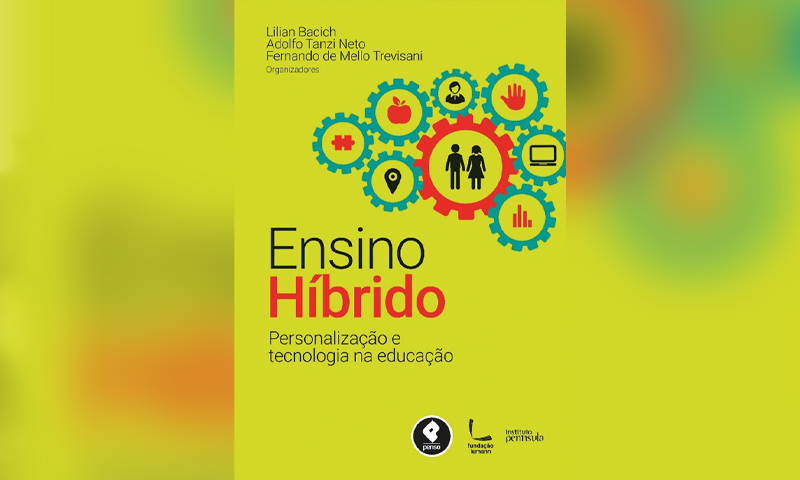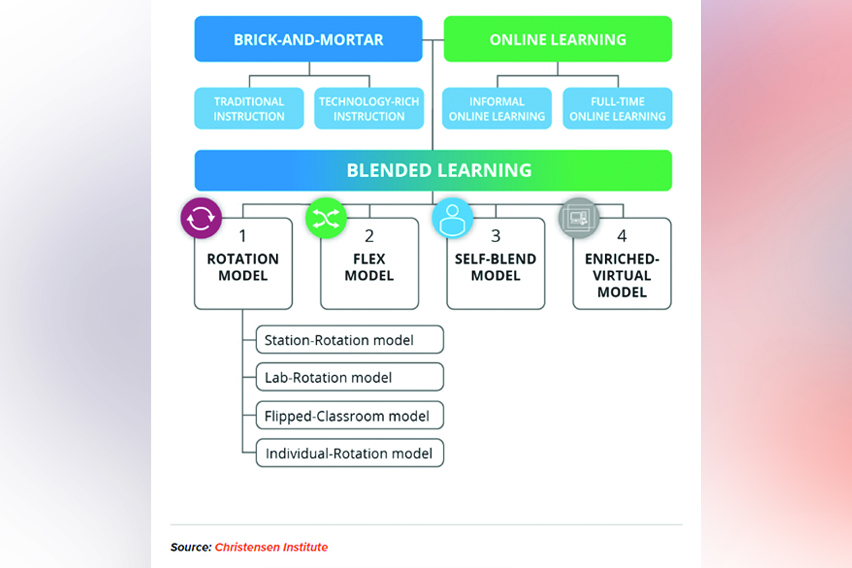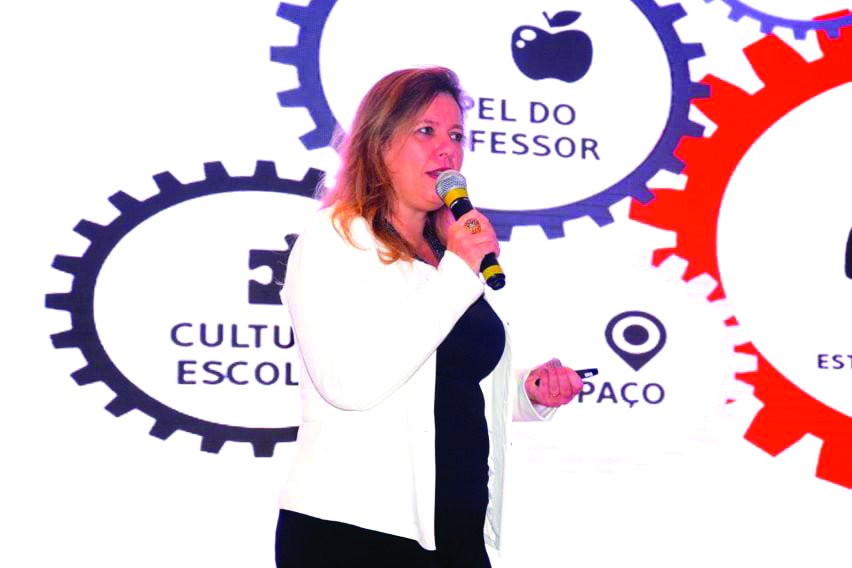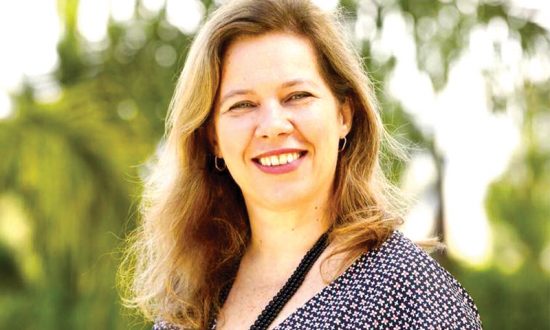Dr. Lilian Bacich is a passionate senior educator who has 28 years of experience in working with basic education, undergraduate and graduate education and is Coordinator of the Active Learning Post Graduation Course at Instituto Singularidades. Author of two books, Lilian believes that changing the mindset to use technology and active learning in favour of the school and teaching depends on personalized teacher training. She knows that this process is not easy and engaging teachers to implement an innovative and personalized project involves all the school community. She holds a doctorate degree in School and Human Development Psychology from University of São Paulo (USP).
The reopening of schools demands from educators and institutions the analysis of different scenarios. In this context, I share some possibilities from Blended Learning, in this book I co-organized and discussed the theme but did not go further into it at that time, in 2015. In this production, our reflections about Blended Learning were directed towards sustained attention models, possible with all students present in the classroom, and not about disruptive models, which consider that not all students will be at school, such as Enriched-Virtual Model and A La Carte Model, as shown in the image below. As I always like to remember, our view of Blended Learning supports itself in the relationship that Dewey establishes between teaching and learning. For the author, both concepts are intimately related and making a choice for the word “teaching” considers that the counterpart is learning, once the student is at the center of the process, and it is to make this learning possible that the classes are planned. Currently, we have been faced with some misunderstandings about the implementation of Blended Learning, which consider that the teacher is at the center of the process and this counterpoint is what I would like to discuss in this text.

What does Blended Learning mean when we consider that the student is at the center of the process?
Blended Learning has as its focus personalization, considering that the digital resources are means for the student to learn, at its own pace and time, making it possible to have a protagonist role and, therefore, is at the centre of the process. Thus, the experiences created for the online environment aside from offering interaction possibilities for knowledge and development of abilities, it is also offered learning evidence, during times that the students are face to face with the teacher, present in the classroom, it is possible that the teacher uses the same collected evidence to potentialize its class learning. Therefore, according to this definition, classes happen at the school and are transmitted live to those who are home (Here or There model) are not included in the Blended Learning definition we adopted in our references; classes that happen in remote learning model, with students and teachers at their own houses, even combined in syncron and assyncron moments do not include in Blended learning definition. These are some examples of the misunderstandings I have observed. I invite you to analyze the following as some Blended Learning models that can contribute to a partial reopening of schools.
Flex model and Project-Based Learning
In this model, students keep remote learning as their main part of the process and, at school, the purpose is having activities which develop skills and abilities, that can be potentialized by the presence of pairs, in face to face activities. A suggestion for planning these activities is working through projects, in which there is the possibility of applying knowledge built during the online period, considering that more complex cognitive processes. Project Based Learning (PBL) is an active methodology which uses projects as the main focus of learning, integrating, most of the times, two or more subjects. These projects can arise from problems or a specific matter, originated from authentic context, involving investigation, hypothesis, group work and other competencies leading to a solution or a final product. In this context, students must deal with interdisciplinary matters, make decisions and work as a team. Critical thinking, creativity and collaboration are essential to this process.

Enriched Virtual Model: being present at school with specific aims
In this model, students do their studies about all curricular compounds in an online format and go to school for specific mandatory sessions with a teacher, once or more times a week. In these sessions with the teacher, discussions are deepened on aspects which deserve it, such as doubts clarification, tutoring for the next steps in learning, such as personalized mentoring. The difference between what was offered by the majority of schools at this moment, through remote classes and the Enriched Virtual model it the possibility of personalization of learning. Which means the online proposals through concept explanation videos, texts for reading about different angles on each concept, allowing students to go further into the aspects that generate, individually, more engagement. Amplifying instruments of data collection, therefore, becomes essential, mainly to possibilitate keeping up with this personalization. In a more restrictive scenario, this model would work with teacher’s hours dedicated to smaller student groups, which would gather, respecting all health guidelines, for sharing essential learning, which was selected as indispensable to be worked with during the school year. In a less restrictive scenario, this model would work with a parcel of students which would meet for creating and performing sharing strategies in bigger groups, such as debates, problem-solving that apply to beforehand learning in the individual format. We see, in this model, an association with the Blended Learning model, named Flipped classroom model. In order to make this model work as personalization of learning, the collection of data is essential and the presential meetings are supported by it.
A La Carte model: blended curriculum
In the A La Carte model, according to the author’s definition, the learning of a subject is made completed by an online model, and it is more efficient in the new Ensino Médio (Brazilian equivalent to high school), in the elective subjects. In a more restrictive scenario, specifically for Ensino Médio, the elective subjects could migrate completely to an online format, making it possible for a followed mentoring by teachers, with tutoring happening in an online format, through videoconferences. Exams would also happen in this format. In a less restrictive scenario, some of the subjects, previously selected, would migrate to wrap up the year in an online format, at a close look provided by the teachers, through videoconferences for subject deepening and discussions, however with content delivered online. The exams would be made, in groups, in presential meetings.

Considerations
In the different scenarios I have presented in this text, a reflection about online engagement in planning is important. More than just considering that presential and online classes will be in the expository format, it becomes relevant to establish the function of each moment. The online format presents excellent space for expository classes, when in the recorded classes format. Recorded classes can turn into an explanations repository on concepts and can be reused for recovery and filling in learning gaps, which eventually, some students may present. The synchronous classes, when remotely or presential, in Blended Learning, should not be a space for expository classes, but for human contact, for sharing amongst people, shedding light to such relevant matters as empathy, argumentation, critical thinking. Delivering content should not be the focus at this point, instead of the possibility of problem-solving and putting learning that was built previously into action, giving more sense to what we called blended learning, which is more than just the union of presential and online classes, but the possibility of learning personalization, and taking Cesar Coll (2018) as a reference: “The personalization of learning is conceived, as a group of pedagogical and didactical strategies oriented to promoting and reinforcing the meaning of school learning for students. […] The point is not if we should or should not advance to personalization, yet how to do so.” Perhaps this is the moment of thinking on how to do so, restarting the discussion that innovation will be more and more methodological than technological. We know that making the best decisions, at this moment we are at, is not something simple, since there are many other factors involved. However, the choices to be made should be well-grounded and have a focus on students active learning. This is the only way we will be able to develop essential skills like critical thinking, problem-solving, collaboration, communication, and creativity!




